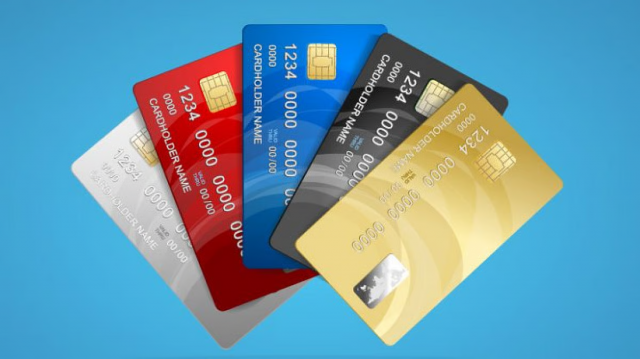Travelling abroad brings excitement and adventure, but it also calls for careful financial planning. Among the many tools that enable smooth international transactions, a forex card stands out as a convenient, secure, and cost-effective way to carry foreign currency. Whether used for tuition fees, hotel bookings, or everyday shopping, a forex card simplifies your foreign exchange needs.
However, a lost or blocked card in a foreign country can cause considerable stress, especially when you are dependent on it for daily expenses. Knowing what steps to take immediately can make all the difference between a temporary hiccup and a prolonged financial disruption.
This guide walks you through the step-by-step approach to follow if your forex card is lost or blocked abroad, ensuring that you remain calm, informed, and financially protected.
Understanding the Role of a Forex Card
Before diving into the action plan, it is essential to appreciate the significance of a forex card in global travel. Issued in partnership with leading banks and global payment networks, a forex card functions like a prepaid debit card, loaded with one or more currencies based on your travel destination.
It allows you to:
- Avoid fluctuating foreign exchange rates after card loading
- Withdraw local currency from ATMs
- Swipe or tap for purchases without currency conversion hassles
- Monitor and manage usage via mobile apps
Several banks in India, including top private-sector institutions, offer multi-currency forex cards with zero cross-currency charges and emergency assistance services. These benefits make the card an ideal companion for international students, tourists, and business travellers.
Immediate Steps to Take If Your Forex Card Is Lost or Stolen
1. Stay Calm and Assess the Situation
The moment you realise your forex card is missing, stay composed. Verify that it is not misplaced within your hotel room, wallet, or bag. If you've been robbed, notify the local authorities immediately and get a copy of the police report, which may be required later by the issuing bank.
2. Block the Card Immediately
The next step is to block your card to prevent unauthorised transactions. Most banks provide 24x7 customer care support for cardholders. Call the helpline number mentioned on your email or account portal, or use the bank’s mobile app to block the card instantly.
Leading Indian banks that offer forex card services, such as travel-friendly debit options, often provide 24x7 helplines and mobile app access to help you block or replace your card quickly — one example being the iMobile app by ICICI Bank, which allows you to manage your foreign exchange card on the go. This feature adds a crucial layer of convenience and security.
3. Report to the Bank’s Customer Support Team
After blocking the card, you must inform the bank officially. Share details like your name, registered contact information, card number (if available), and circumstances of loss. Some banks may ask you to fill out a loss report or send an email with supporting documentation like passport or visa copies.
If the card is linked to your customer ID, some banks may temporarily disable all linked foreign currency wallets to ensure added safety.
What to Do If Your Forex Card Gets Blocked Temporarily
Sometimes, your card may be blocked by the issuing bank due to:
- Suspicious transaction activity
- Exceeding daily ATM withdrawal or swipe limits
- Regulatory compliance checks
- Technical glitches or expired card status
In such cases:
1. Call Customer Care to Understand the Issue
Reach out to the bank’s support team to understand the reason behind the block. Most issues can be resolved remotely if you verify your identity and transaction history.
2. Authenticate Yourself and Request Reactivation
Once the issue is identified, provide necessary authentication (like OTP, passport details, or answers to security questions). Upon verification, the bank may choose to unblock the card or guide you on reactivation procedures.
3. Track Status via the Mobile App
Many card issuers now offer app-based tracking features for international products. You can check your card status, wallet balance, or block/unblock it through the mobile platform. Private-sector players with dedicated travel banking support often streamline such interactions via mobile-first experiences.
Requesting a Replacement Forex Card Abroad
If your card is permanently lost or damaged, banks may issue a replacement card depending on their terms and the location of your travel. Here's how to proceed:
1. Ask About Emergency Card Replacement Services
Leading banks offer global assistance through tie-ups with international partners. In some cases, they can arrange for emergency cash or deliver a replacement forex card to your overseas address or hotel, often within 24–48 hours.
2. Provide Required Documentation
You will need to submit:
- Passport copy
- Visa copy
- FIR or police complaint (in case of theft)
- Original booking documents and personal identification
This helps the bank validate your identity and activate the card securely.
3. Load Funds on the Replacement Card
Once the new card is issued, you can transfer the remaining balance from the lost card or reload the wallet through your bank account. Online forex recharges are available 24x7 for most cardholders, giving flexibility to manage funds on the go.
Preventive Measures to Minimise Risk
While losing a forex card abroad is an unfortunate event, you can reduce risks by taking the following precautions:
- Always carry a backup card or low-denomination cash in a different bag
- Keep a digital and hard copy of your forex card details
- Enable app-based tracking and alerts
- Familiarise yourself with the bank’s international helpline numbers
- Use multi-currency cards only for international transactions to avoid blocking due to domestic usage.
Choosing the Right Forex Card with Global Support
When selecting a forex card for international travel, consider the product features and global service capabilities of the issuing bank. Comprehensive benefits like 24x7 customer care, emergency cash services, multi-currency loading, and real-time control via app are hallmarks of a reliable offering.
Private-sector banks in India have elevated the user experience by integrating forex card management within their all-in-one mobile banking apps, eliminating the need for separate logins or portals. For example, some banks allow users to block cards, check balances, reload foreign currency, and initiate replacement requests all in one place.
Additionally, users can often link their forex cards to international travel insurance plans, ensuring financial protection in case of fraud or loss abroad.
Conclusion
A lost or blocked forex card can be disruptive, but with timely action and access to responsive support systems, you can recover quickly and resume your international journey with confidence. The key lies in choosing a forex card provider that offers global assistance, digital convenience, and strong customer service.
Indian travellers can benefit from advanced offerings by leading private-sector banks that combine global expertise with user-friendly digital platforms. With the right card and preparedness, your financial transactions abroad can remain secure, seamless, and stress-free.






